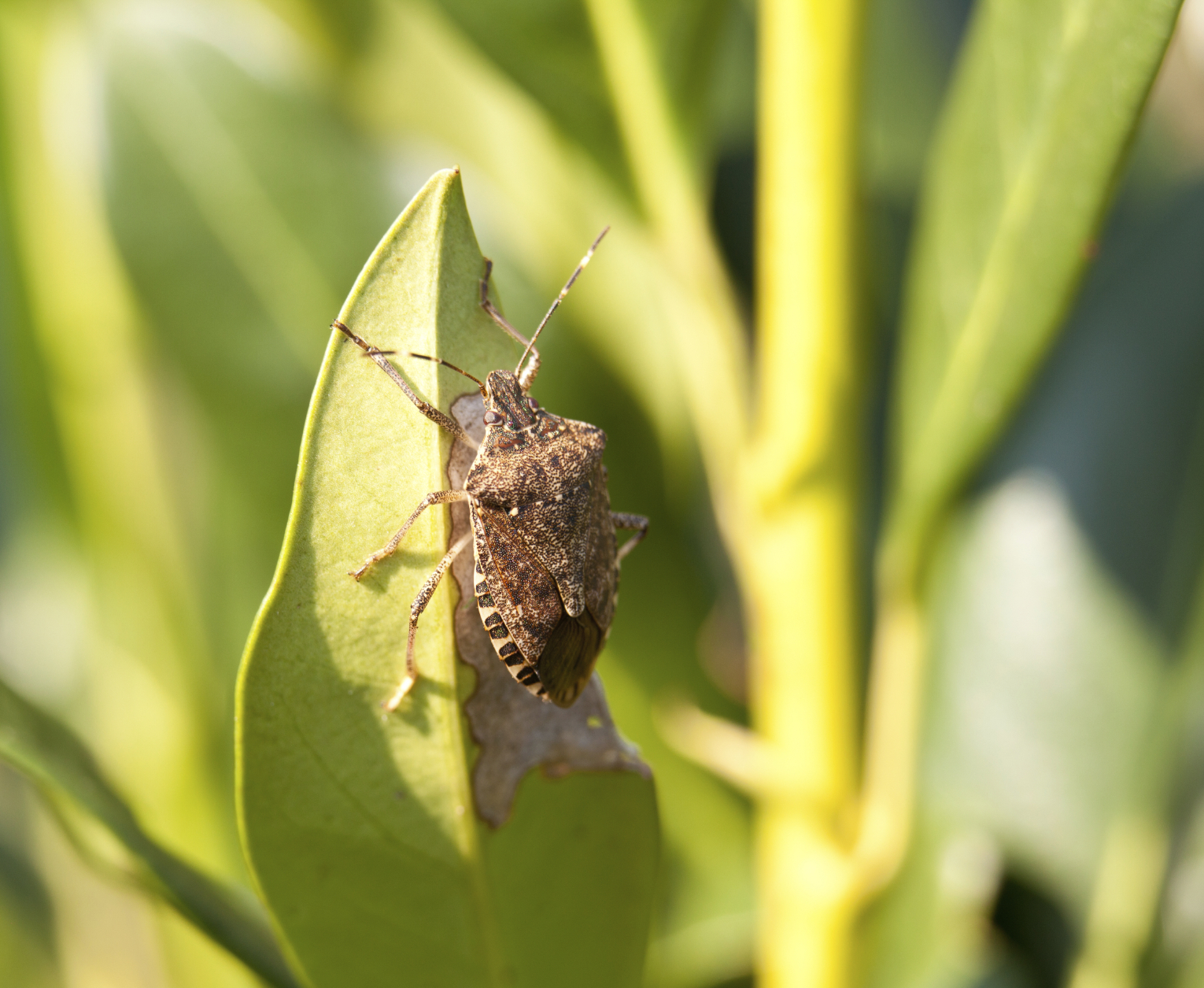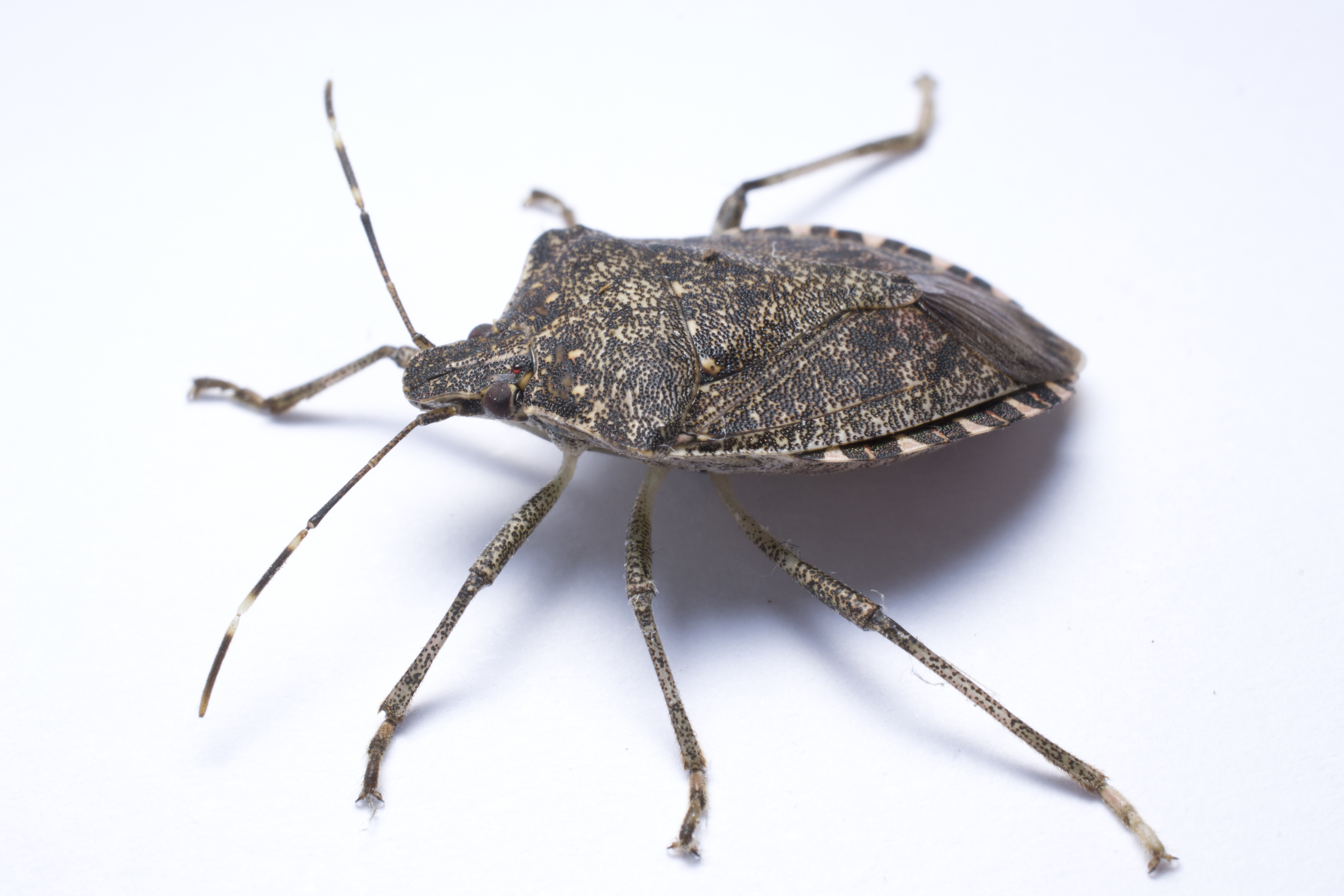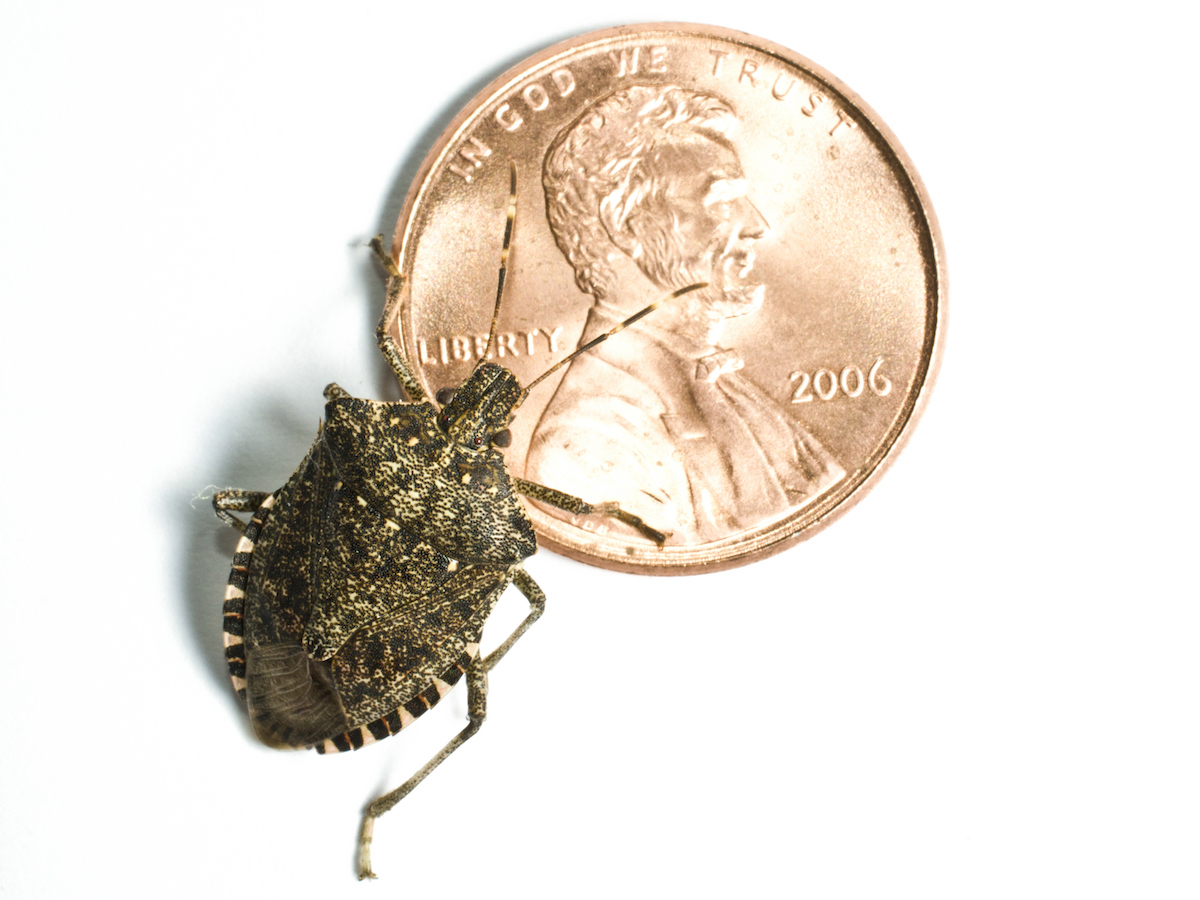Stink Bugs Halyomorpha halys

Stink Bug Identification
Color: Mottled grayish-brown
Size: 3/4" long
Legs: 6
Antennae: Yes
Shape: Triangular or shield
Region: Found in the eastern half of the U.S., as well as California, Oregon, Washington, Arizona, New Mexico and Texas
What are Stink Bugs and Where Do They Come From?
The brown marmorated stink bug (BMSB) earned its name from its tendency to release an odor when disturbed or when crushed. Many other insects have these same characteristics, including some species of ants, beetles and other bugs, but you can recognize a stink bug via its distinctive shape, with a flatter top leading toward a pointed bottom, reminiscent of a shield. Additionally, stink bugs can fly and are pretty good at it!
Stink bugs are considered an invasive species, meaning a pest of foreign origin. So where do stink bugs come from? They were first introduced to the United States from Eastern Asia in the mid-1990s. Their native range includes China, Japan, Korea and Taiwan. They are also referred to as the yellow-brown or East Asian stink bug.
Stink bugs were first collected in the United States in Allentown, PA in the fall of 1996, but apparently not recognized or identified until September 2001. They quickly spread east to New Jersey, then Virginia by 2004, and now southward to the North Carolina border. Today, brown marmorated stink bugs are most prevalent in the mid-Atlanta region, but they have been identified in 44 states and the District of Columbia. Read on to learn about stink bugs, including information on identifying a stink bug infestation, and how to get rid of them.
What Do Stink Bugs Look Like?
Stink bugs are characterized as both “large, oval-shaped insects” and “shield-shaped insects.” Adult stink bugs can reach almost 2 cm in length. They are nearly as wide as they are long. Their legs extend from the sides, making adult stink bugs appear even larger. The brown marmorated stink bug is a brownish stink bug. It has lighter bands on the antennae and darker bands on the wings.
Immature stink bugs, called nymphs, are very tiny when they hatch from their eggs. Nymphs of the brown marmorated stink bug are yellow and red. As they grow, the yellow fades to white. They have bright red eyes during the nymph stage of their life cycle. The nymphs molt or shed their skin five times. Each time a stink bug nymph molts, it becomes larger. By the last molt, the nymphs are almost as large as adult stink bugs.
Stink bugs get their name from the unpleasant odor they produce when they are threatened. It is thought that this odor helps protect the bugs against predators. The stink bugs produce the smelly chemical in a gland on their abdomen. Some species can actually spray the chemical several inches. The smell has often been compared to strong herbs and spices like cilantro and coriander.
Interestingly, the composition of the odor is comprised of chemicals commonly used as food additives and is present in cilantro. This smell can linger for hours so, if possible, try to avoid crushing stink bugs or carefully sweep or vacuum them up if they have entered your house.
Stink bugs get their name from the unpleasant odor they produce when they are threatened. It is thought that this odor helps protect the bugs against predators. The stink bugs produce the smelly chemical in a gland on their abdomen. Some species can actually spray the chemical several inches. The smell has often been compared to strong herbs and spices like cilantro and coriander.
Interestingly, the composition of the odor is comprised of chemicals commonly used as food additives and is present in cilantro. This smell can linger for hours so, if possible, try to avoid crushing stink bugs or carefully sweep or vacuum them up if they have entered your house.
Can stink bugs fly? Yes! Adult stink bugs are good fliers and fold their wings on top of their body when they land. Nymphs do not have fully developed wings. The wings appear when the nymph becomes an adult. Fully developed wings are a way to identify adult stink bugs — if they can fly, they are adults.
Native to Asia, stink bugs were accidentally introduced into the United States sometime during the late 1990s. Since America is not where stink bugs originally come from, they do not have any natural predators here and can therefore rapidly spread. Stink bugs have become established in many areas of the country, posing a particular threat to the agricultural industry, since they destroy crops. A stink bug infestation can damage ornamental plants, fruit trees, and gardens, but they are more of a nuisance than a threat to people. They do not cause structural damage or spread disease.
Do stink bugs bite? No, stink bugs cannot sting and are not likely to bite, but care should be exercised when handling them, to deter these pests from releasing their well-known and unpleasant odor. The stink bug’s mouthparts are grouped in the piercing/sucking category, but they do not use blood as a food source like mosquitoes, biting flies and bed bugs. Their mouths are not structured in a way that enables them to bite through human skin. Most species of stink bugs feed on plants. They suck the juice from leaves, stems and roots of plants. They attack everything from ornamental plants to weeds. The insects pierce the skin of the plant and extract the juice inside. If you find stink bugs in your house, avoid trying to resolve the matter on your own and contact a pest control professional, also known as an exterminator.
Homeowners often find stink bugs inside during the late summer months as well as autumn, when temperatures outside start to drop. Finding large numbers of live or dead stink bugs is a telltale sign of an infestation. Stink bugs will turn up on sunny sides of homes where they warm themselves. Growers often detect an infestation by the damage they cause to their crops.
If a stink bug infestation has developed inside the home or building, contact a licensed pest control professional to evaluate the problem and recommend an appropriate strategy for stink bug control. The expert will remove this invasive species from your home and also help identify the access points for this invasive species.
Homeowners can take several steps to prevent a stink bug infestation in their home. Strategies include sealing cracks around windows, doors, siding, utility pipes, behind chimneys, and underneath the wood fascia and other openings. If you’re wondering where do stink bugs come from, typical entry points include around door and window frames, electrical outlets, light switches, ceiling fans, skylights and ceiling light fixtures. Use a good quality silicone or silicone-latex caulk. Damaged screens on doors and windows should be repaired or replaced. Stink bugs are attracted to light, so change exterior lighting to less-attractive yellow bulbs or sodium vapor lights.
If you need to know how to get rid of stink bugs that have already entered a home or building, a vacuum cleaner can aid in the removal of live or dead stink bugs. The bag must be discarded to prevent odor from permeating the area. After stink bugs have entered the structure, it is best to isolate the affected room or rooms by sealing the bugs out. Since harming sting bugs can release their odor and attract other stink bugs, it’s best to avoid a DIY approach to removal. If an infestation has developed inside the home or building, a licensed pest control professional should be called to evaluate and assess the problem. A professional can also pre-treat for stink bugs in the late summer or fall just prior to bug congregation.
If you suspect a stink bug infestation in your home, the best course of action is to contact a licensed pest control professional. They will conduct a thorough inspection to identify the full extent of the problem. Once the situation is properly identified, the appropriate control measures can be taken.
You can find a certified pest professional near you with the helpful zip code search below.



